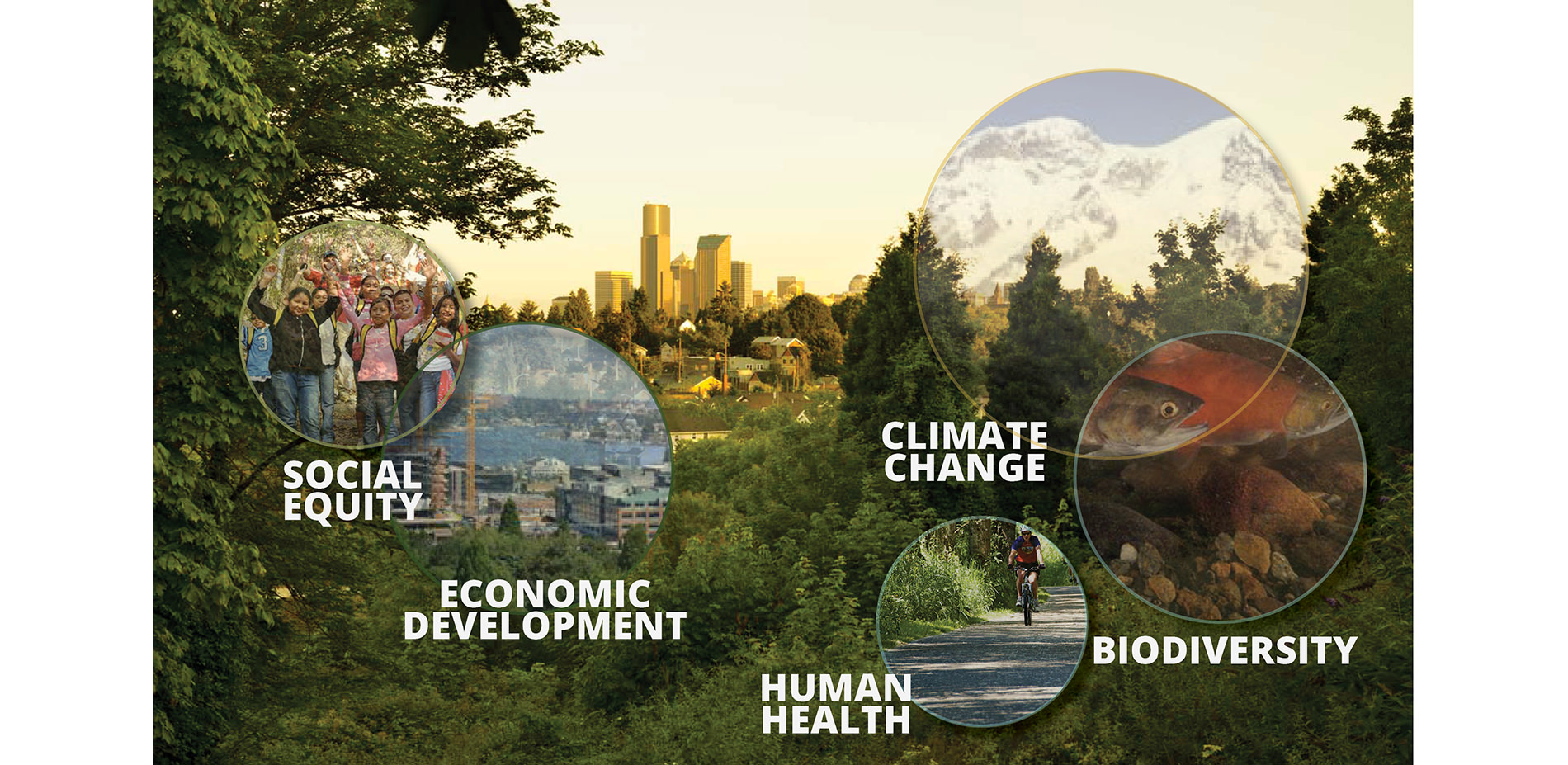
Addressing Regional Challenges through Open Space Analysis and Planning
Accelerated growth and development in the Puget Sound region has cumulated in an urgent need to address the critical regional challenges of biodiversity, human health, social equity, economic development, and climate change, possible through a robust green infrastructure system.
Photo Credit: University of Washington Green Futures Lab
Media: Please submit high-resolution image requests to images@asla.org.
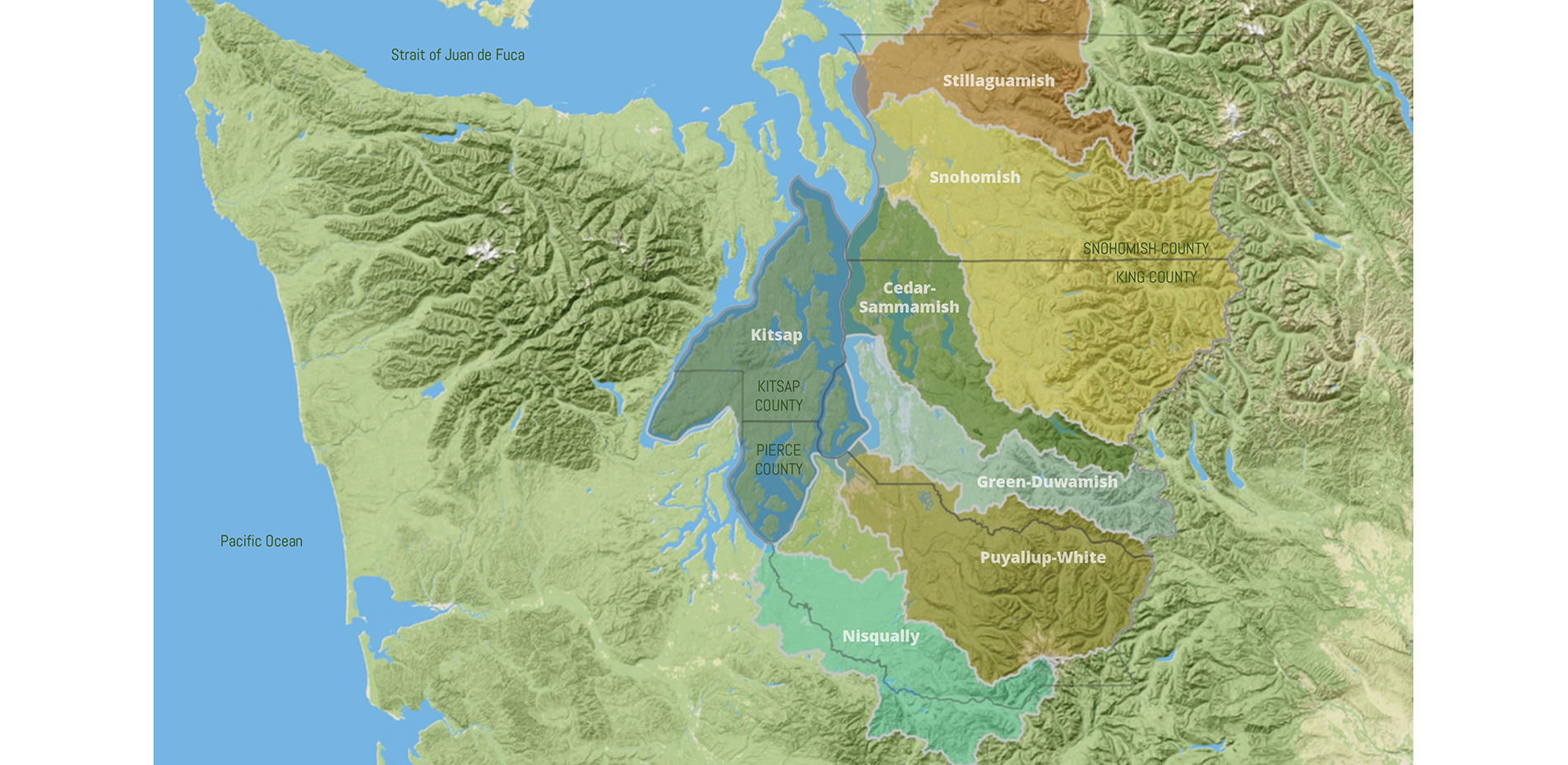
Regional Open Space Study Area
The Central Puget Sound region comprises eight major watersheds and four counties in the Greater Seattle Metropolitan Area, stretching from the mountain crests to the shorelines of Puget Sound – and is expected to support 5 million residents by 2040.
Photo Credit: University of Washington Green Futures Lab
Media: Please submit high-resolution image requests to images@asla.org.
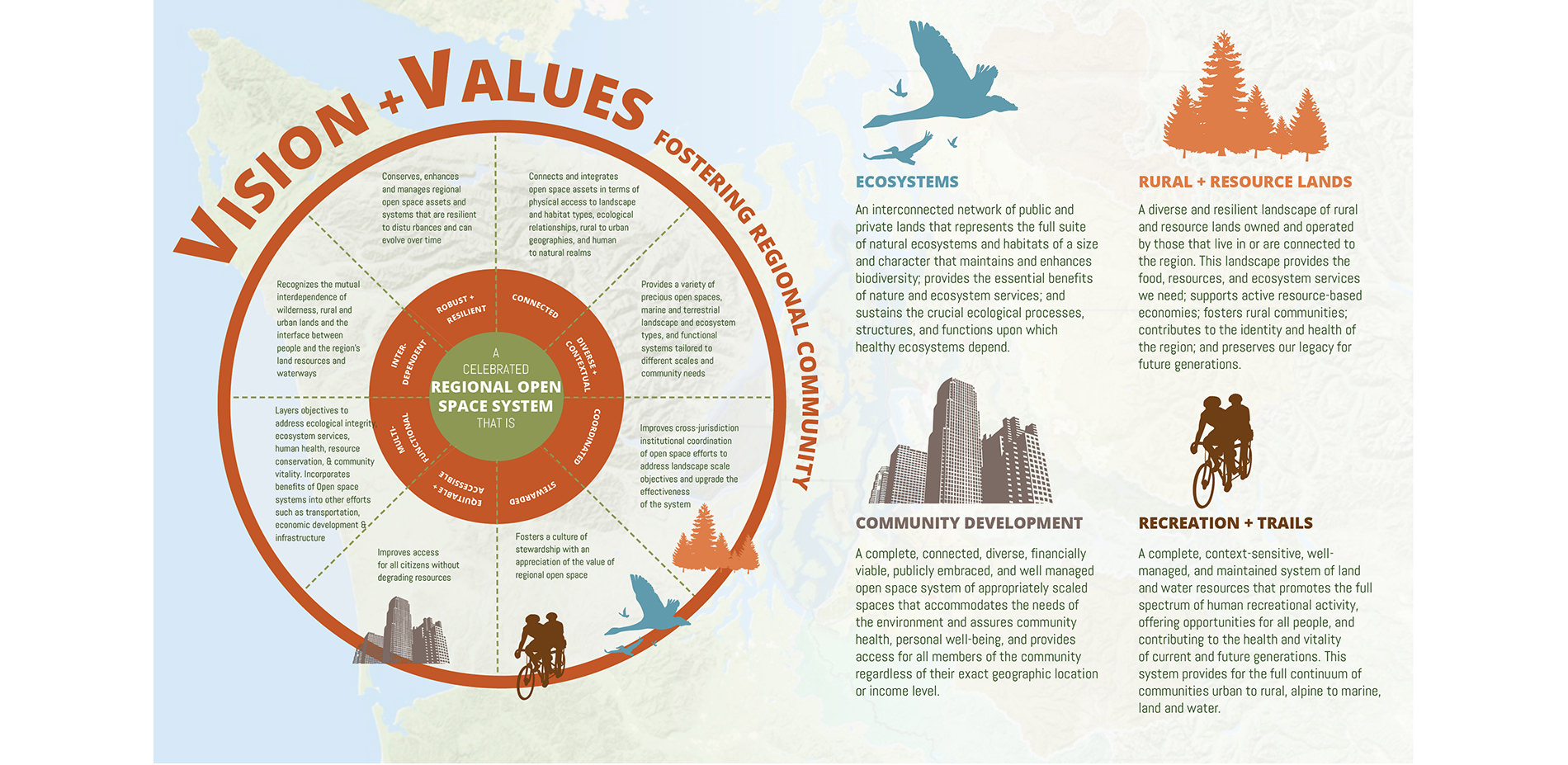
Defining Visions and Values of the Central Puget Sound Regional Open Space Strategy (ROSS)
The ROSS initially convened over 100 stakeholders to lay the groundwork for a long-range strategy, defining a vision for a robust regional open space system that is "diverse, connected, coordinated, resilient, multifunctional, equitably accessible, interdependent, and stewarded."
Photo Credit: University of Washington Green Futures Lab
Media: Please submit high-resolution image requests to images@asla.org.
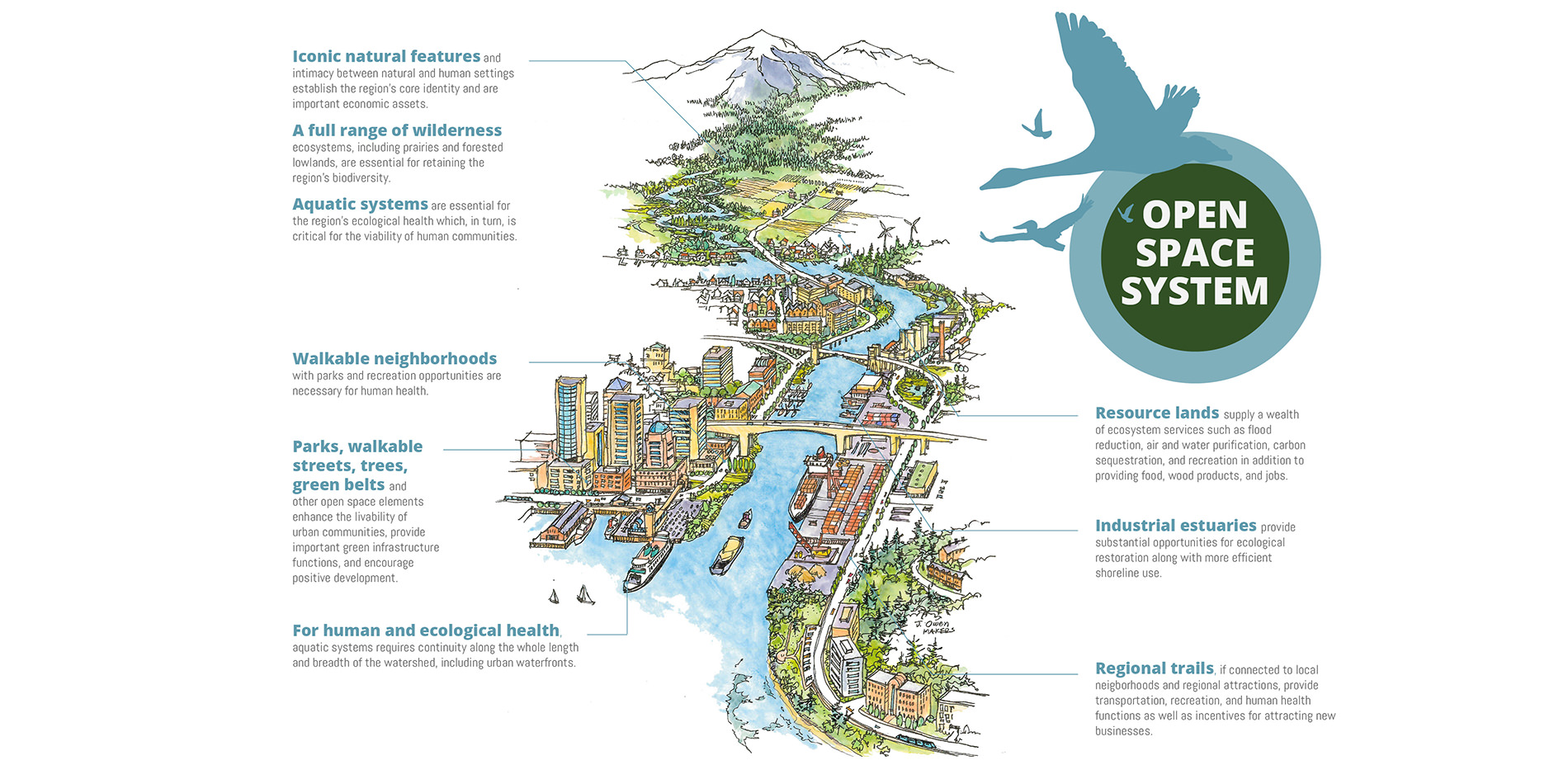
ROSS Preliminary Comprehensive Strategy
The Preliminary Strategy called for an integrated spatial vision that measures and optimizes open space benefits, applying landscape ecology and ecosystem services concepts to guide decision-making and promote open space conservation values, from urban to rural to wild.
Photo Credit: University of Washington Green Futures Lab
Media: Please submit high-resolution image requests to images@asla.org.
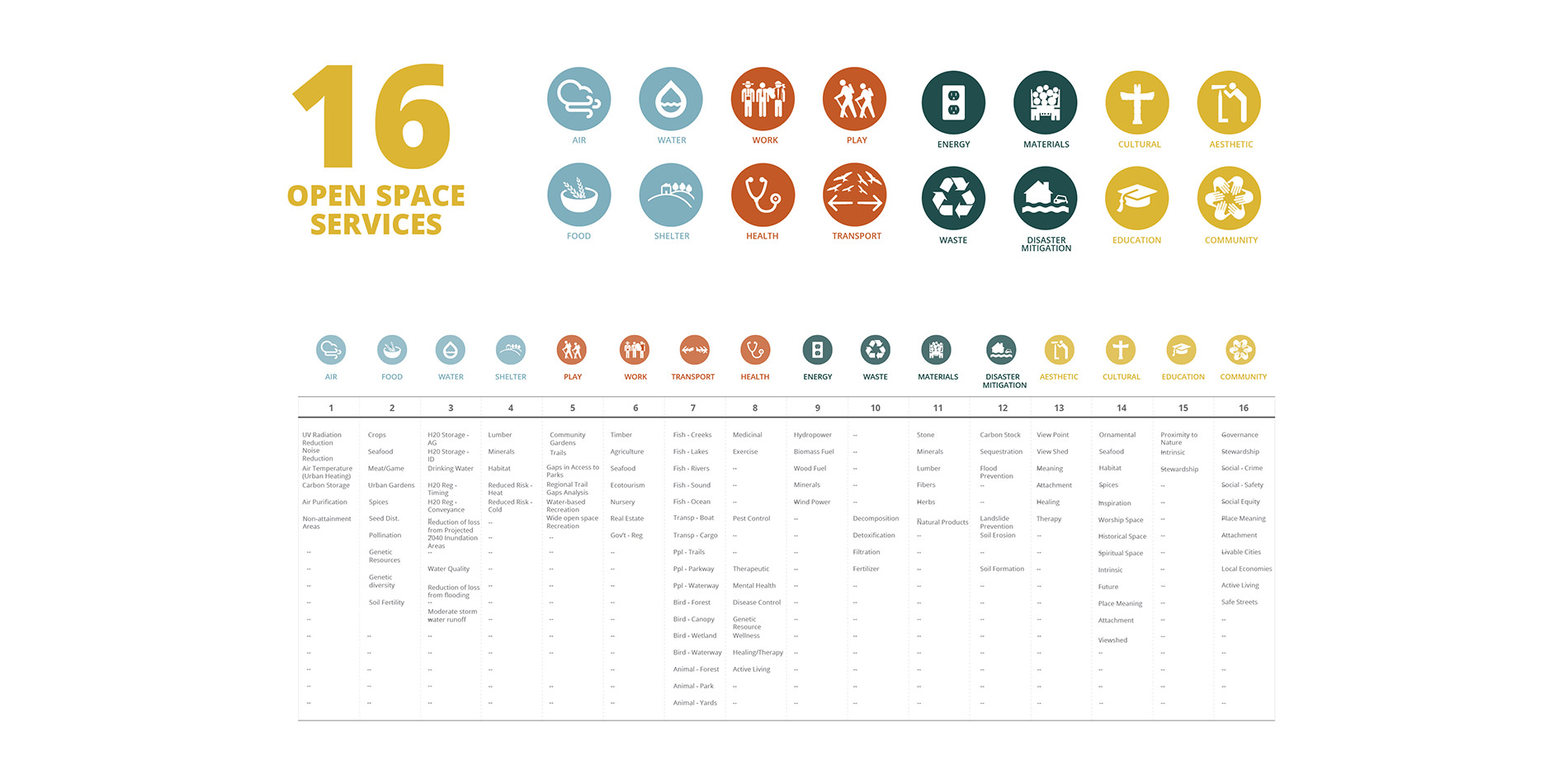
Defining Open Space Services
We developed an “Open Space Services” framework – based upon “ecosystem services” but broadened to more responsively incorporate cultural and social equity benefits – to guide measurement of the values provided by farms, forests, urban parks and trails, and sustainable infrastructure.
Photo Credit: University of Washington Green Futures Lab
Media: Please submit high-resolution image requests to images@asla.org.

The Value of the Region’s Open Spaces
The Planning Team modeled the current economic contribution of select Open Space Services, concluding that the 4-county region’s open spaces contribute between $11. 4 and $25.2 billion to the economy annually, and are valued at approximately $825B.
Photo Credit: University of Washington Green Futures Lab
Media: Please submit high-resolution image requests to images@asla.org.
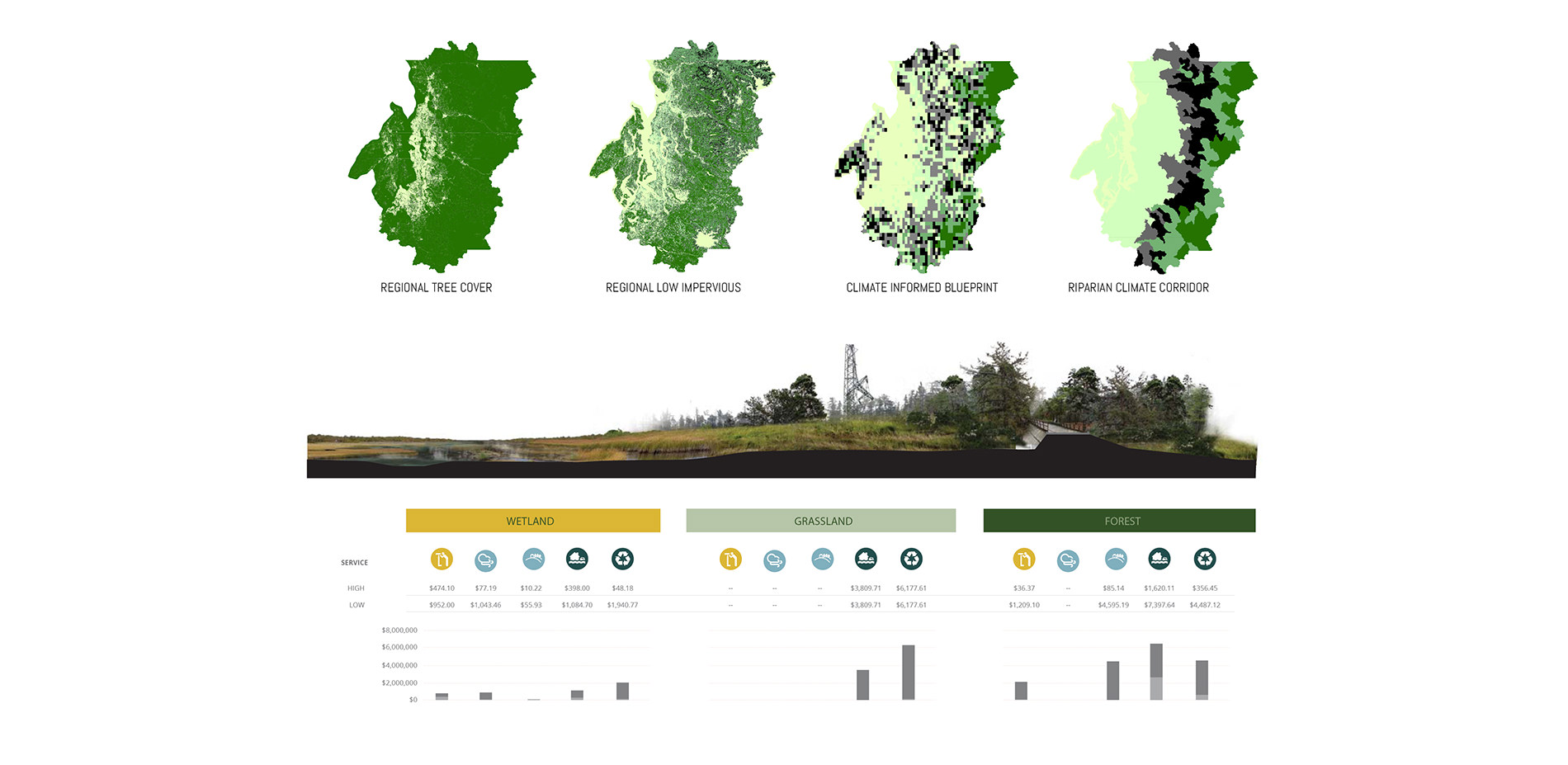
Open Space Services Analysis
Using the valuation, the ROSS team conducted economic analyses of open space services and return on investment of specific green infrastructure projects that were being considered for the “Green-Y” proposal, such as a levee setback for the Puyallup River.
Photo Credit: University of Washington Green Futures Lab
Media: Please submit high-resolution image requests to images@asla.org.
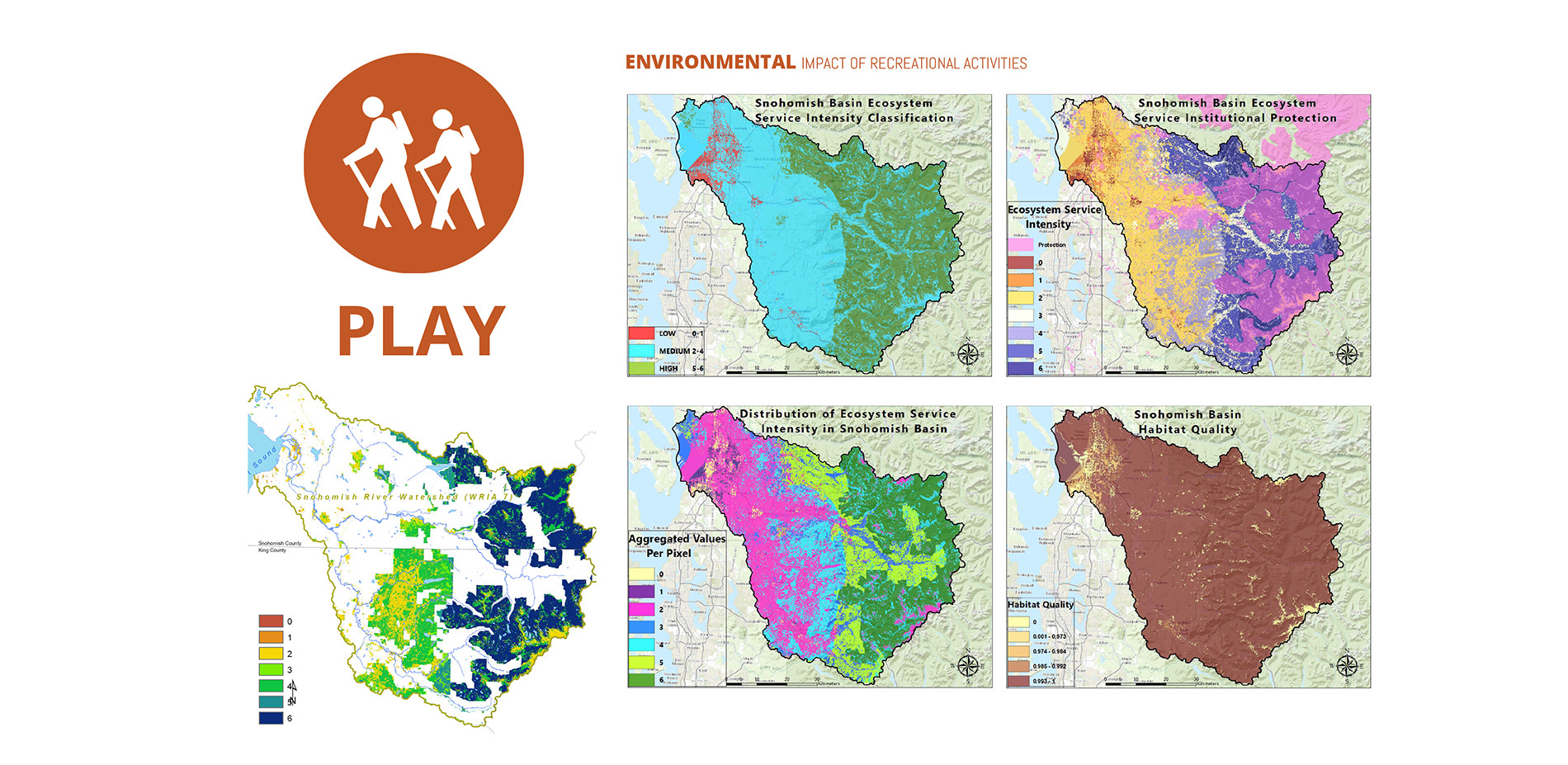
Ecosystem Scenarios in the Snohomish Watershed
The Snohomish Basin has 60,000 acres of regionally significant forest land. Based on high interest from local stakeholders, we consolidated and evaluated coordinated recreation-based economic revitalization scenarios for open space benefits in the Snohomish watershed.
Photo Credit: University of Washington Green Futures Lab
Media: Please submit high-resolution image requests to images@asla.org.

Equitable Access in the Green Duwamish Watershed
In the Green-Duwamish watershed, a more inclusive and equitable planning process emerged as the most important need. This watershed strategy process focuses on coordinating across dozens of jurisdictional plans for more equitable access to parks and open spaces.
Photo Credit: University of Washington Green Futures Lab
Media: Please submit high-resolution image requests to images@asla.org.

Puyallup-White Watershed Open Space Strategy: Synthesized Proposals
The “Green-Y” Core is one of the three integrative strategies from the Puyallup-White WOSS which combines proposals to retain remaining farmlands, improve the river’s ecological functions, connect regional multi-purpose trails and give equitable access to parks and open space.
Photo Credit: University of Washington Green Futures Lab
Media: Please submit high-resolution image requests to images@asla.org.
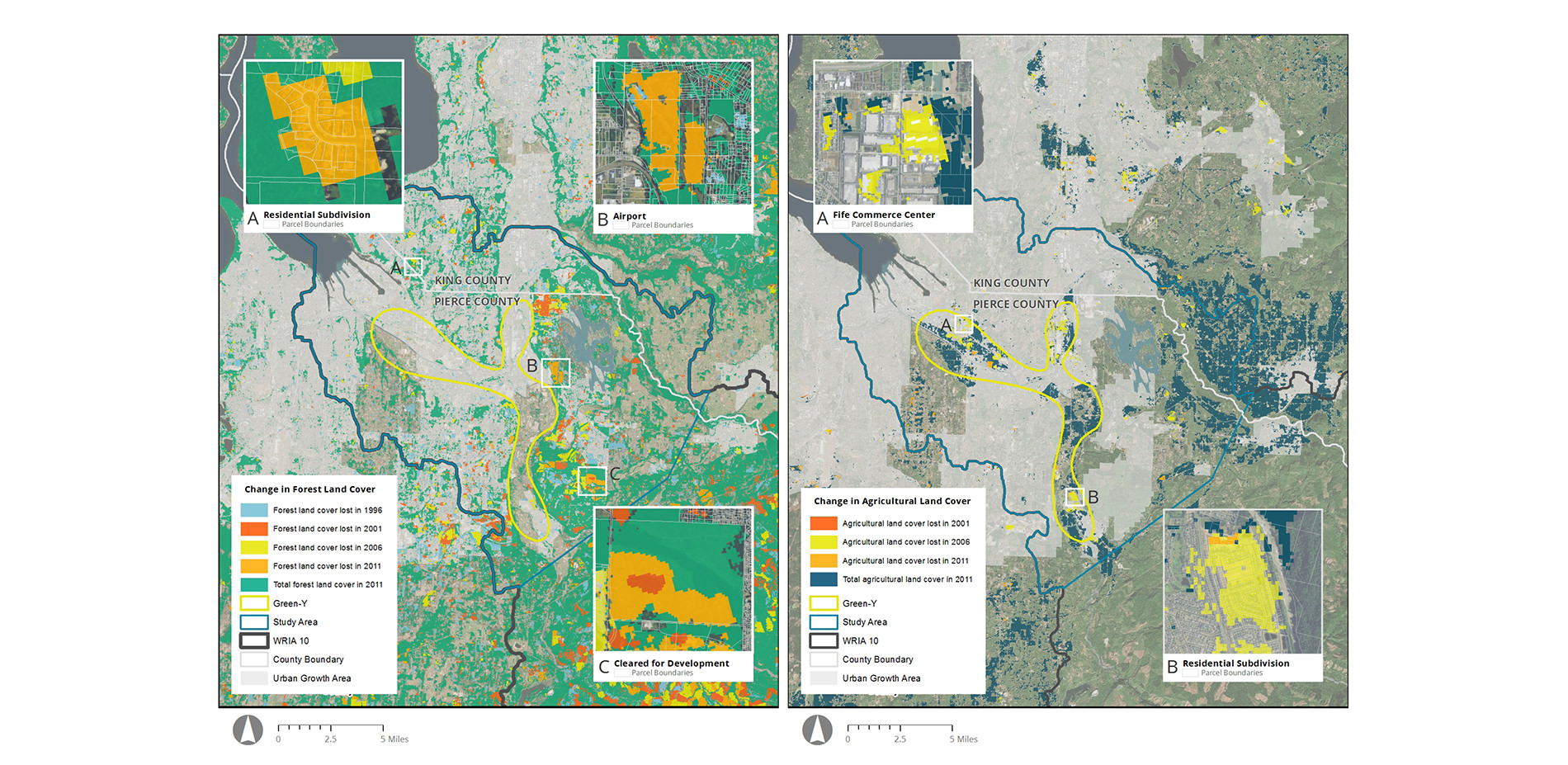
Regulatory Analyses
To advance implementation of proposed action items, further planning analysis focused on the regulatory challenges and opportunities associated with maintaining and enhancing forestry and agricultural resource lands in the fast-urbanizing “Green-Y” area of the Puyallup-White watershed.
Photo Credit: University of Washington Green Futures Lab
Media: Please submit high-resolution image requests to images@asla.org.
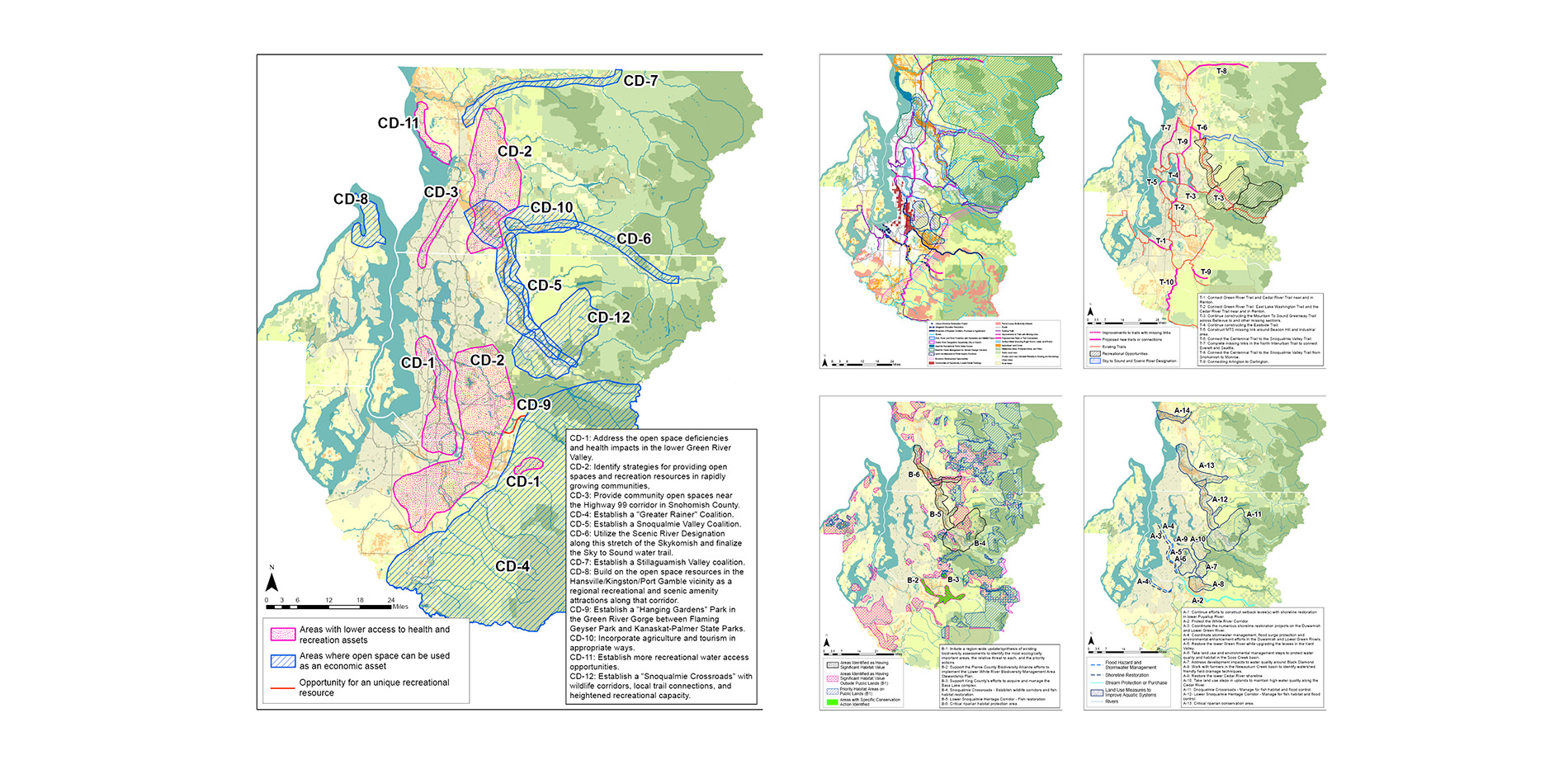
Regional Strategies and Priority Actions
Working between watershed and regional scales, the Team employed GIS data, planning documents, interviews and workshops with experts to identify the most important landscapes to conserve and enhance. Recommended actions address agriculture, forests, recreation, community, trails and habitat.
Photo Credit: University of Washington Green Futures Lab
Media: Please submit high-resolution image requests to images@asla.org.
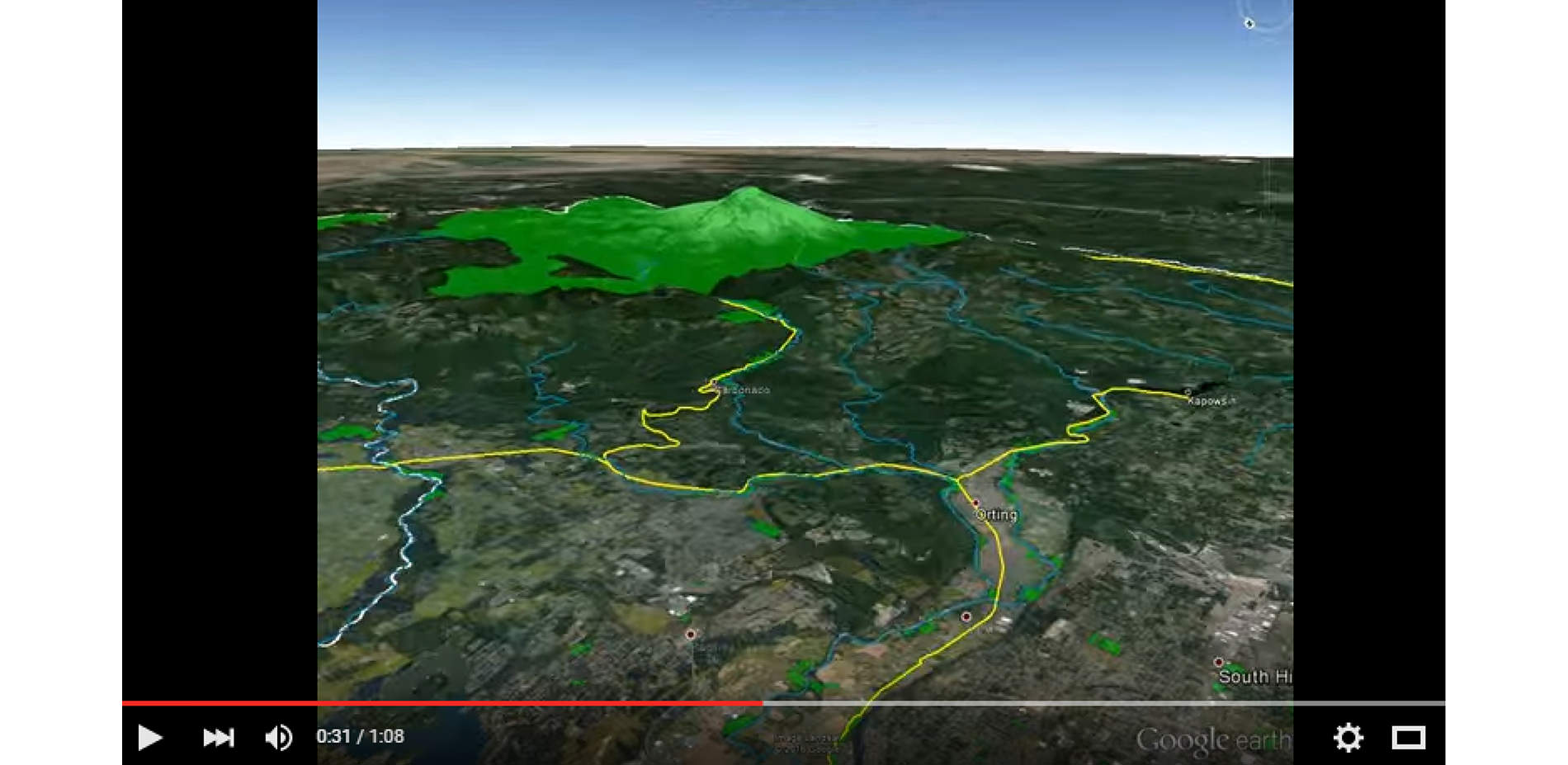
Communicating a Regional Vision
The ROSS team utilized video and 3-D modelling at the regional level to show how the green infrastructure system can address interconnected priorities. The narrative, rather than prescriptive, approach to a regional vision enabled collaboration between planning efforts.
Photo Credit: University of Washington Green Futures Lab
Media: Please submit high-resolution image requests to images@asla.org.
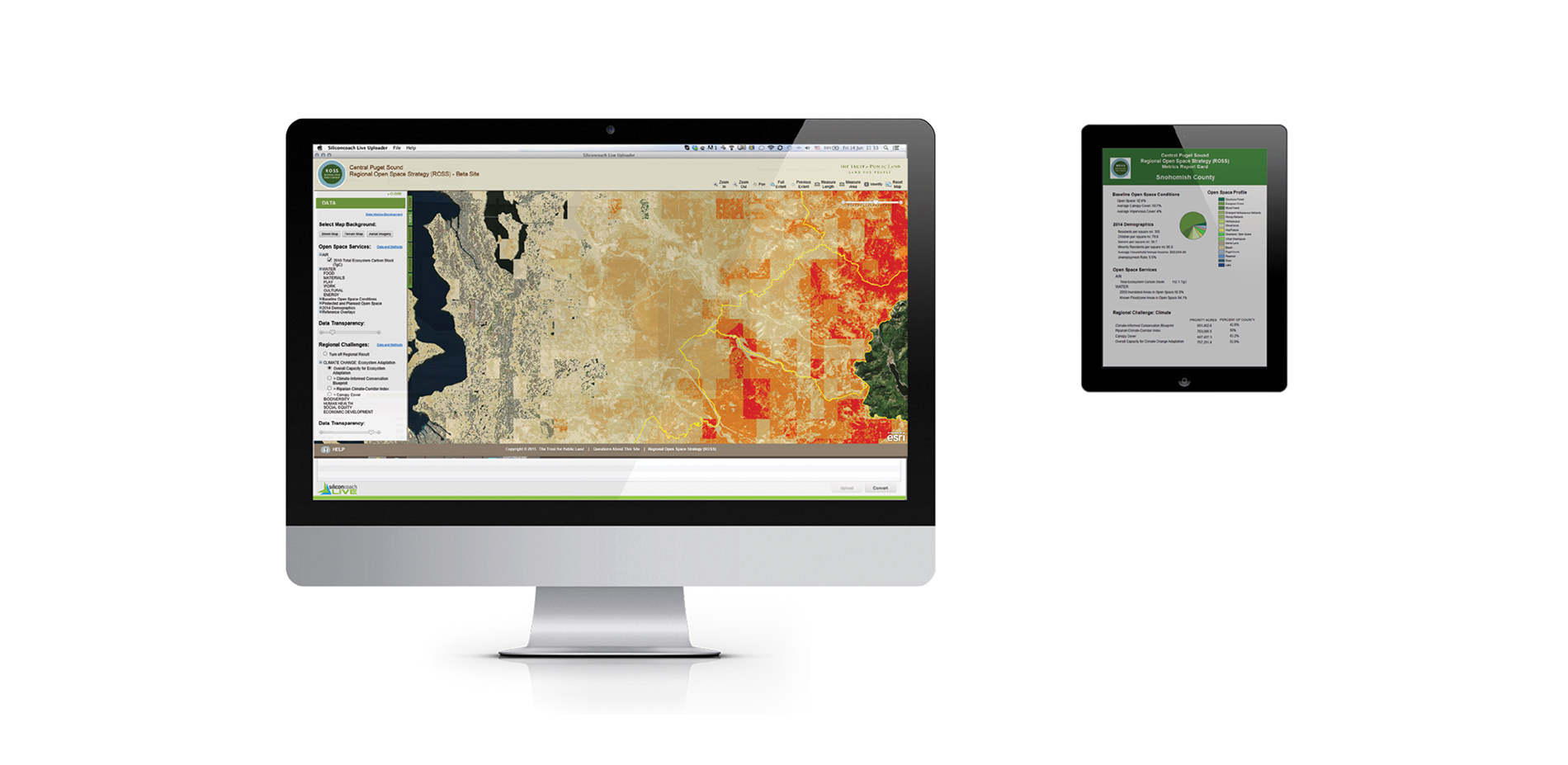
Ecosystem Service Planning Tool Development
The ROSS team and partners created a prototype online GIS tool to model the capacity of open space conservation and enhancement scenarios to confront identified regional challenges. The completed interactive tool will be available in the coming year.
Photo Credit: University of Washington Green Futures Lab
Media: Please submit high-resolution image requests to images@asla.org.
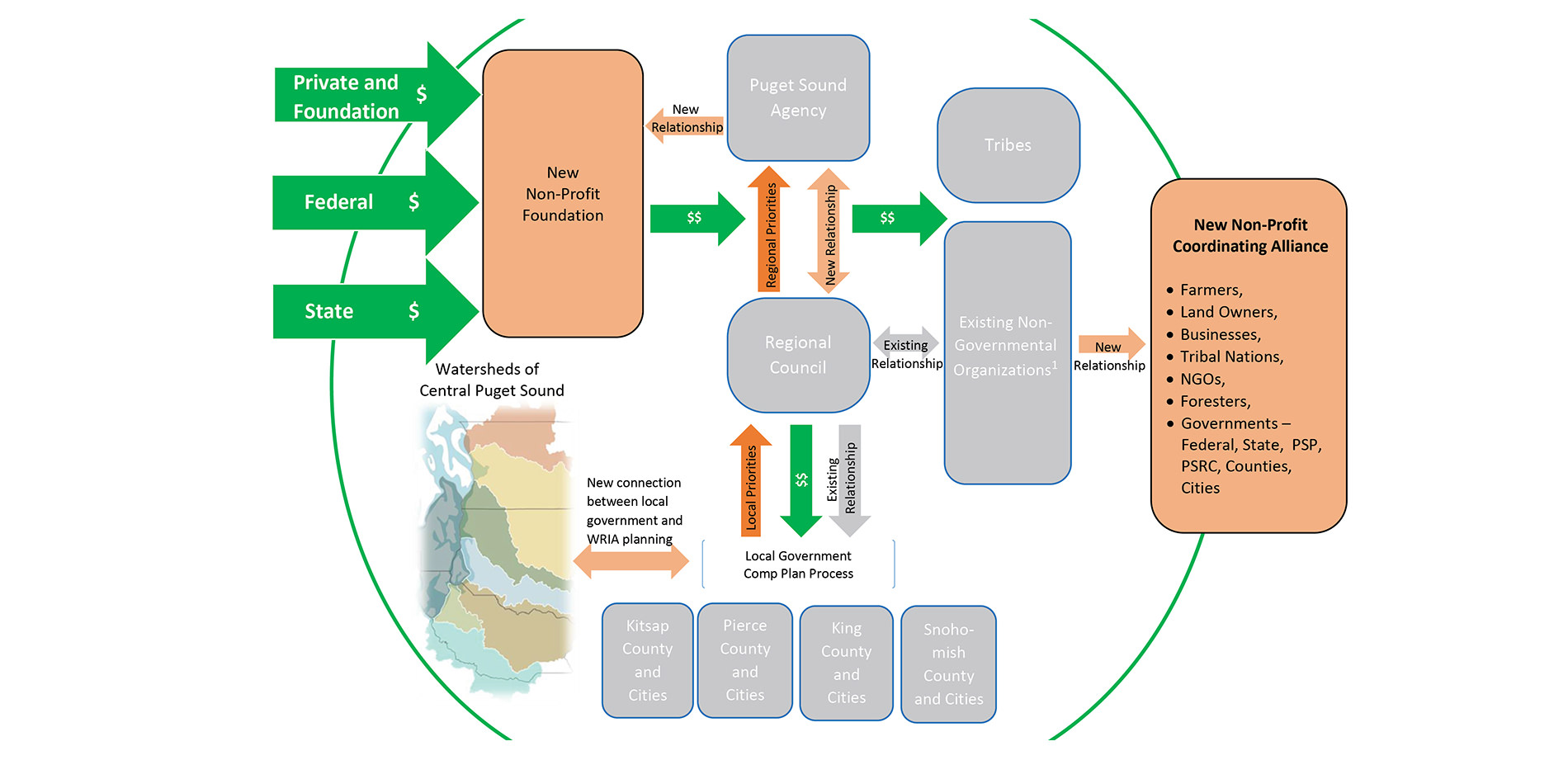
Regional Governance and Funding
The ROSS team worked with governmental and NGO leaders to craft an organizational strategy to expand, fund and implement the regional green infrastructure strategy, working in both sectors to coordinate connected open space and land use decisions across jurisdictional boundaries.
Photo Credit: University of Washington Green Futures Lab
Media: Please submit high-resolution image requests to images@asla.org.


















